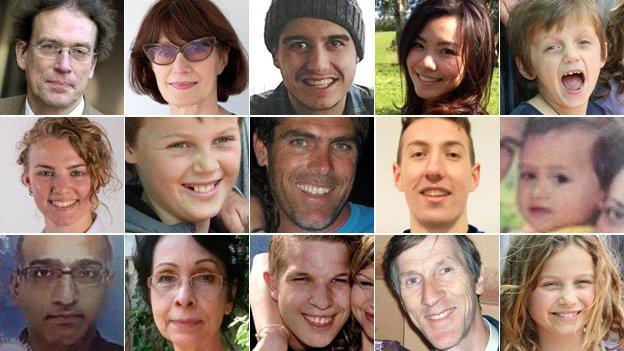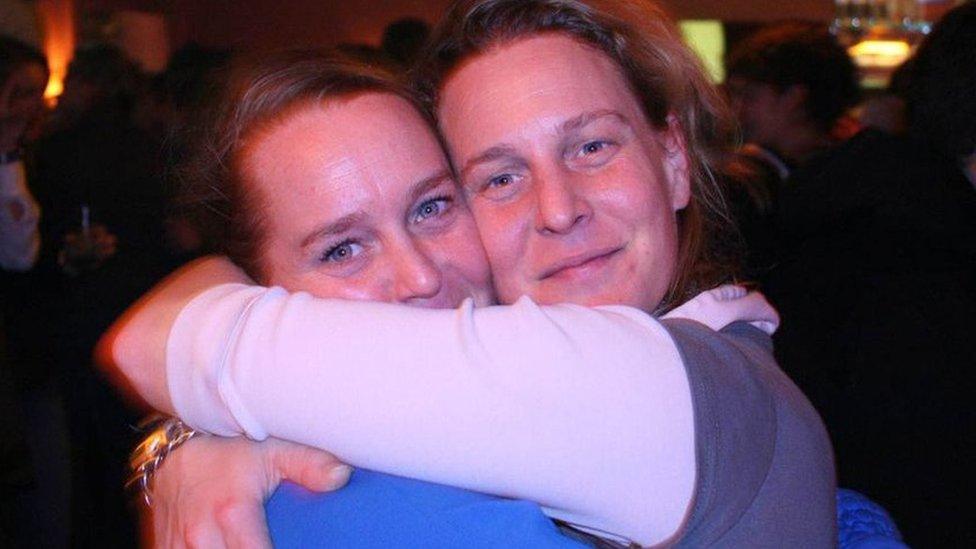MH17 missile owned by Russian brigade, investigators say
- Published
Investigators said in 2018 they had evidence of the route taken by a Russian missile convoy
The missile that downed a Malaysia Airlines flight over eastern Ukraine in 2014 belonged to a Russian brigade, international investigators say.
For the first time, the Dutch-led team said the missile had come from a unit based in western Russia.
All 298 people on board the Boeing 777 died when it broke apart in mid-air flying from Amsterdam to Kuala Lumpur.
It was hit by a missile fired from rebel-held territory in Ukraine. Russia says none of its weapons was used.
But on Thursday Wilbert Paulissen, a Dutch official from the Joint Investigation Team (JIT), told reporters: "All the vehicles in a convoy carrying the missile were part of the Russian armed forces."
He restated the JIT's conclusion that the plane had been destroyed by a Russian-made Buk missile, adding that it had been supplied by the country's 53rd anti-aircraft brigade in Kursk.
At a news conference in the Dutch city of Utrecht, the investigators also showed social media pictures which they said traced the route the missile convoy had taken to reach eastern Ukraine.
What happened to MH17?
The incident occurred at the height of the conflict between government troops and pro-Russian separatists.
The plane left Amsterdam's Schiphol Airport on 17 July 2014 and was due to arrive at Kuala Lumpur in Malaysia on the following day.
The plane lost contact with air traffic control about 50km (30 miles) from the Russia-Ukraine border.
The Dutch Safety Board released an animated video showing the flight path of the plane
It crashed in the Donetsk area, in territory controlled by pro-Russian separatists.
Footage was later released by the Ukrainian government suggesting that a Buk missile had been brought in from Russia on the day of the crash, and then taken back across the border the next day.
What has been said about the incident?
In October 2015 the Dutch Safety Board concluded that the plane had indeed been hit by a Buk missile.
How does a Buk missile system work?
In September 2016, the JIT - which includes officials from the Netherlands, Australia, Belgium, Malaysia and Ukraine - reached a similar conclusion in a preliminary report.
It said it had "irrefutable evidence" that the missile had been brought in from Russian territory and fired from a field controlled by pro-Russian fighters.
The investigators simulated various trajectories of the warhead. They showed it had exploded metres above the aeroplane's nose, showering the aircraft with fragments.
On Thursday Russia restated its position that none of its forces had been involved. "Not a single anti-aircraft missile system from the Russian Federation has ever crossed the Russia-Ukraine border," the defence ministry in Moscow said.
Meanwhile Ukrainian President Petro Poroshenko promised in a Facebook post (in Ukrainian) that he would "spare no effort to ensure that the actions of the Russian Federation as a state which supports terrorism get an appropriate assessment", external in the International Court of Justice.

- Published26 February 2020

- Published28 July 2014

- Published9 July 2015

- Published20 July 2014
